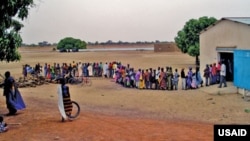Neglected tropical diseases, or NTDs, are chronic disabling illnesses that thrive in areas with poor sanitation, lack of clean drinking water and scant access to medication. The World Health Organization has identified 17 of them as priorities for action. Some of them can be effectively treated and even eliminated with low-cost medications – in many cases donated by pharmaceutical companies.
Getting these medications to where they are needed has been a daunting task since these are diseases of the poorest of the poor. Their impact on individuals and communities can be devastating. NTDs impair intellectual development in children, and reduce school enrollment. They limit the ability of infected individuals to work and thrive, thus trapping them in a cycle of poverty and disease. Today, over 1 billion people suffer from at least one NTD.
In 2006, the U.S. Agency for International Development, or USAID, started a program addressing the seven diseases that comprise 80 percent of all NTDs – lymphatic filariasis, blinding trachoma, onchocerciasis, schistosomiasis and the three most common infections -- the soil-transmitted parasites hookworm, roundworm and whipworm.
Back then, the program had a budget of $15 million to distribute 36 million treatments to 16 million people in four countries, said USAID Assistant Administrator Ariel Pablos-Méndez. Today, it’s $100 million, and 240 million treatments distributed to 115 million people in 31 countries.
The program is very successful for three reasons. First is USAID’s partnership with the pharmaceutical sector, which has to date contributed $8.8 billion worth of medication. Second is USAID’s partnership and coordination with the government of the United Kingdom’s Department for International Development which has allowed for a collective reach to almost 50 countries and the provision of 340 million treatments in 2014. And third, USAID’s cooperation with host governments and the ability to build upon the existing infrastructure of national disease control and elimination programs.
“The elimination of these diseases of extreme poverty as a public health scourge is within our grasp,” said USAID Assistant Administrator Pablos-Méndez.“USAID is committed to … working with countries and our global partners to reach the remaining 800 million people who still need treatment.”












